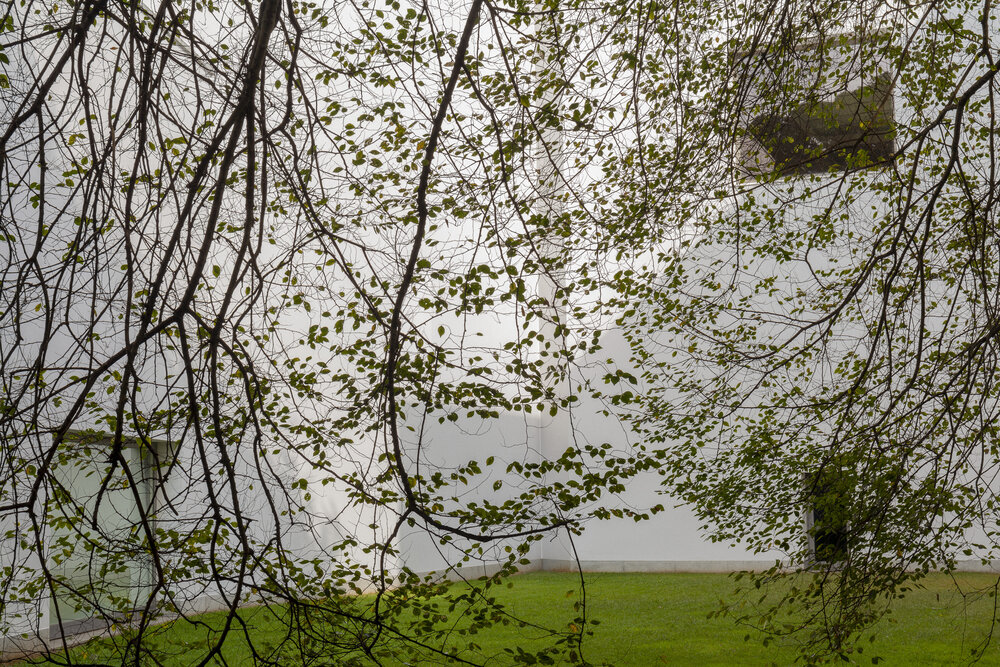
Des yeux qui ne voient pas
##plugins.themes.immersion.article.figure##

Abstract
I must confess that – due to a broken foot – my enchantment with nature was somewhat faded. Staring at these photographs became an almost cathartic experience, serenity washing over in a dream, renewing a passion for the universe that created architecture and that, in turn, is recreated by it. If the Boa Nova Tea House were like Saramago’s stone raft, adrift in a vast ocean, then the Serralves Museum would be like one of Cesário Verde’s bucolic poems, bathed in idyllic foliage.
From the very first page, one discovers the building romantically dressed in seasonal vegetation, enveloped in a curtain of greenery, which drapes leaves as floating water lilies and droplets of rain. Distant windows seem to emerge beyond the sumptuous filter, manipulating a type of picturesque nostalgia: the primitive longing for a Garden of Eden or the simple magic of a child playing outside.
Having planted an oak tree in Serralves, this interpretation might be biased by my own boyish recollections or, perhaps, the landscape architect was just prone to episodes of refined apophenia. João Gomes da Silva was invited by Álvaro Siza to help mediate the relationship with Jacques Gréber’s 1932 designs, supposedly inspired by the geometries of Versailles.
Having planted an oak tree in Serralves, this interpretation might be biased by my own boyish recollections or, perhaps, the landscape architect was just prone to episodes of refined apophenia. João Gomes da Silva was invited by Álvaro Siza to help mediate the relationship with Jacques Gréber’s 1932 designs, supposedly inspired by the geometries of Versailles.
When Siza’s Alhambra project was exhibited here, in 2017, I pointed out that Gréber’s octagons and waterlines were connected to Granada – like those of Luis Barragán or Louis Kahn. In fact, all of Serralves can be viewed as a modern-day Alhambra and not because of its embellished gardens, protected by a stone wall, but because of its sequencing of spaces, of light and shade.
[...]